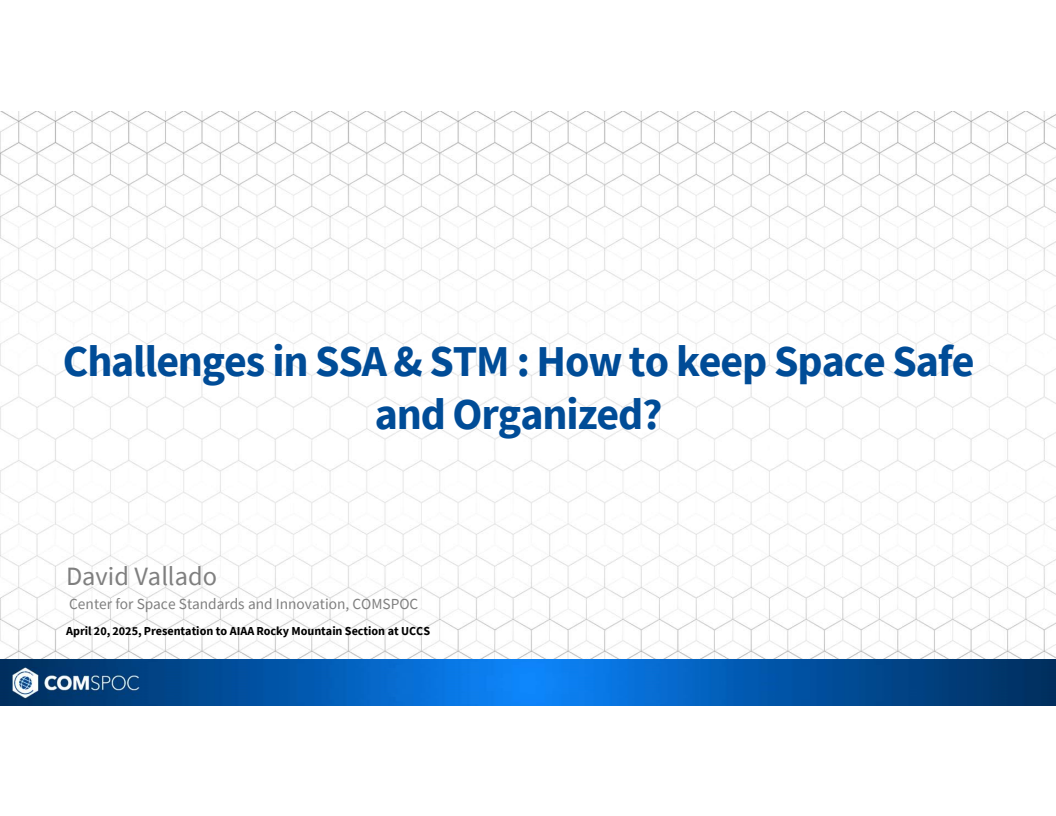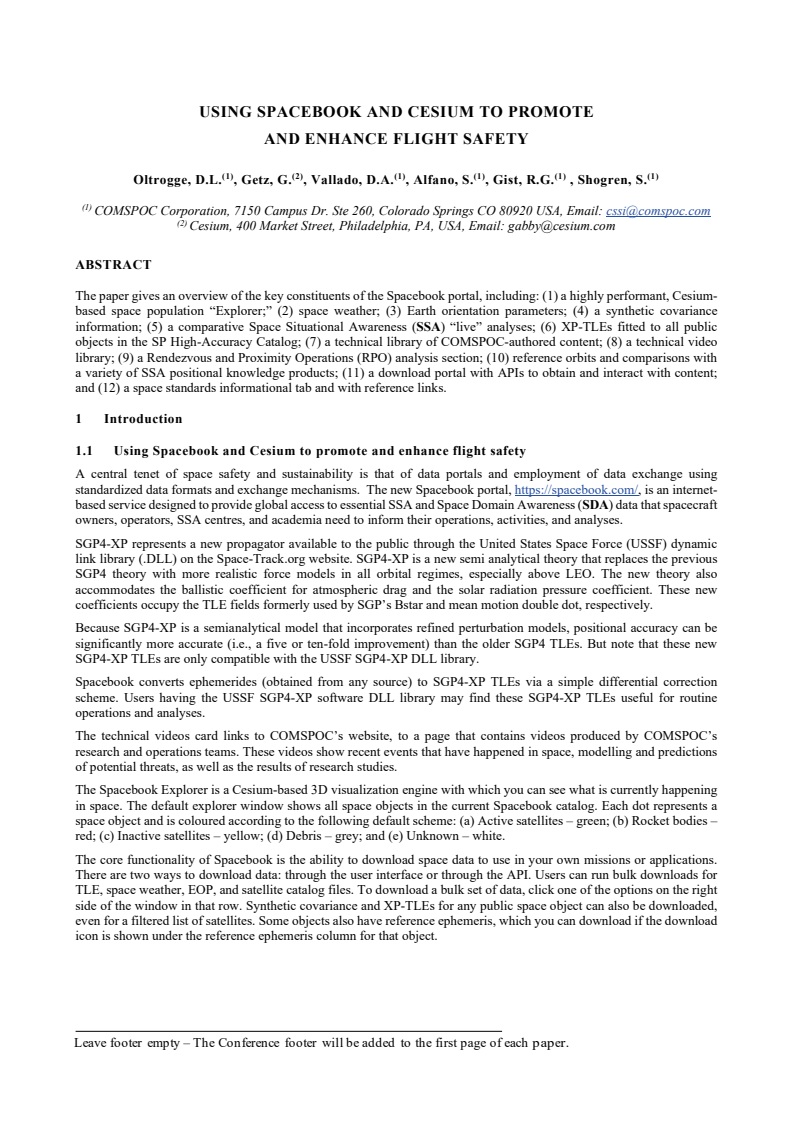Evaluating Gooding Angles-only Orbit Determination of Space Based Space Surveillance Measurements

Id: 292
Type: Conference paper
Published: 05/12/2010
Event: AAS Born Symposium 2010
Authors:
Click an author to filter the list of related assets below.Abstract:
Geosynchronous satellites have traditionally been some of the least accurately maintained orbits with existing ground based sensors for several reasons. MIT/LL successfully operated the MSX/SBV sensor to provide additional observations to AFSPC for processing of GEO space objects for many years. Resulting GEO orbits witnessed a large improvement in accuracy. There are several US Air Force initiatives to introduce future Space Based Space Surveillance (SBSS) systems into the US AF Space Surveillance Network (SSN) sensor mix, but to date, none are operational. This paper reexamines expected orbit determination results for SBSS observations starting with the Initial Orbit Determination (IOD) of the observations, the placement of the SBSS sensor orbit, and data fusion with ground based radar and optical measurements. The goal is to investigate expected IOD and OD techniques to process the observations to improve the GEO Space Situational Awareness (SSA). In each case, simulated data is used to show the expected results and uncertainties of the resulting orbits. Analytical Graphics Inc. Orbit Determination Toolkit’s (ODTK) implementation of the Gooding technique of IOD is used to illustrate performance for routine and near-singular observation geometries.
Citation:
Vallado, David A. 2010. Evaluating Gooding Angles-only Orbit Determination of Space Based Space Surveillance measurements. Paper AAS 10-xxx presented at the Born Symposium, May 11-14. Boulder, CO, accessible at https://comspoc.com/Resources/Content/Private/C-20220425T154541/Paper/AAS%2010-xxx%20Born%20SBSS%20and%20Gooding.pdf.
Papers with related authors:




Using Spacebook and Cesium to Promote and Enhance Flight Safety
Read More

Actionability and Persistence Of Conjunction Data
Read More

Actionability and Persistence of Conjunction Data
Read More

Practical issues with using a full gravity field
Read More
LEO satellite behavior during the May 2024 Gannon geomagnetic storm
Read More
Deep operator and SSA collaboration for space sustainability
Read More
Synthetic Covariance Production Using a New Digital Approach
Read More
Contrasting the Inflection Points and Efforts in Space Traffic Coordination and Management
Read More
Addressing the debilitating effects of maneuvers on SSA accuracy and timeliness
Read More
Actionability and Persistence of Conjunction Data
Read More
DEEP OPERATOR AND SSA COLLABORATION FOR SPACE SUSTAINABILITY
Read More


Russian ASAT Debris Cloud Evolution and Risk
Read More
Results of comprehensive STCM data fusion experiment
Read More





Debris Risk Evolution And Dispersal (DREAD) for post-fragmentation modeling
Read More
Sequential Processing of ILRS Observations – Experiences over the last 5 years
Read More

Fragmentation event debris field evolution using 3d volumetric risk assessment
Read More

Application of New Debris Risk Evolution And Dissipation (DREAD) Tool to Characterize Post-Fragmentation Risk
Read More
Orbital Strategies to Mitigate the Solar Exclusion Effect on Space-Based Observation of the Geosynchronous Belt
Read More
New Consolidated Files for Earth Orientation Parameters and Space Weather Data
Read More
Updated Analytical Partials for Covariance Transformations and Optimization
Read More
Sequential Orbit Determination Using Satellite Laser Ranging
Read More
Improved SSA through orbit determination of Two Line Element Sets
Read More


ORBIT DETERMINATION ISSUES AND RESULTS TO INCORPORATE OPTICAL MEASUREMENTS IN CONJUNCTION OPERATIONS
Read More


